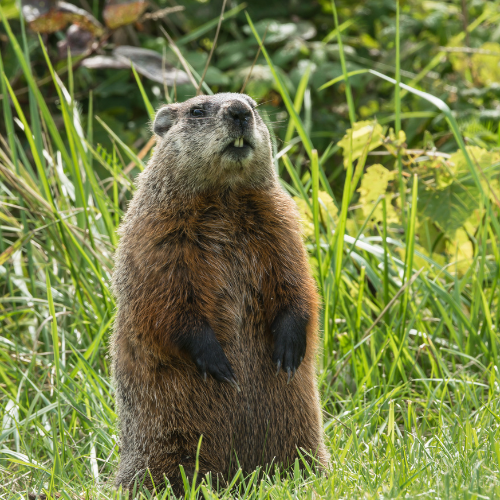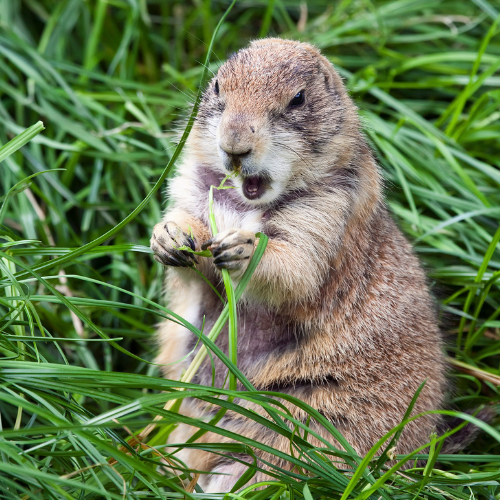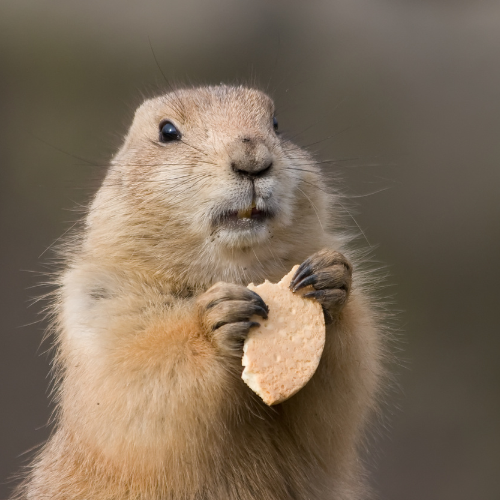Groundhogs
Introduction to
Groundhogs, also known as woodchucks, are large rodents known for their burrowing habits and significant impact on gardens and landscapes. These animals, members of the squirrel family, are widely recognized due to their role in the annual Groundhog Day tradition. While they can be beneficial by aerating the soil, groundhogs can also cause extensive damage to crops and structural foundations. This article explores the recognition, biology, habits, prevention, and professional handling of groundhogs, providing a comprehensive guide to understanding and managing these burrowing creatures.
Recognition
Groundhogs are medium to large rodents, typically measuring about 16 to 20 inches in length and weighing between 4 to 14 pounds. They have coarse fur that is usually brown or grayish-brown, with short legs and a bushy tail. Groundhogs possess strong, curved claws adapted for digging, and their incisors grow continuously, which is common among rodents. Their eyes, ears, and nose are positioned towards the top of their heads, allowing them to stay alert while partially submerged in their burrows. Signs of a groundhog presence include large, crescent-shaped dirt mounds near burrow entrances and gnawed plants or crops.
Biology
Groundhogs belong to the Sciuridae family and are found throughout North America, primarily in open fields, meadows, and along forest edges. They are true hibernators, entering a state of deep sleep during the winter months and emerging in early spring. Groundhogs are herbivores, feeding on a variety of vegetation, including grasses, clover, alfalfa, and garden crops. They breed once a year, with a gestation period of about 32 days. Females give birth to a litter of 2 to 6 young, which are weaned and independent by late summer. Groundhogs play a role in soil health by aerating the ground through their extensive burrowing activities.
Habits
Groundhogs are diurnal, meaning they are active during the day, especially in the early morning and late afternoon. They are excellent diggers, creating complex burrow systems that can be 2 to 5 feet deep and extend up to 30 feet in length. These burrows have multiple entrances and chambers for nesting, sleeping, and hibernating. Groundhogs are solitary creatures, with each adult maintaining its own burrow system. While their burrowing can improve soil aeration, it can also cause significant damage to gardens, crops, and structural foundations. Groundhogs are also known to stand on their hind legs to survey their surroundings for predators.
Prevention
Preventing groundhog infestations involves making your property less attractive and accessible to these animals. Install sturdy fences around gardens and crops, burying the bottom of the fence at least 12 inches underground to prevent burrowing. Use hardware cloth or mesh to cover the base of decks, sheds, and other structures. Remove piles of debris, rocks, and wood that could serve as potential burrowing sites. Maintain a well-mowed lawn to reduce cover for groundhogs. Motion-activated sprinklers and repellents can also be effective deterrents. Regularly inspect your property for signs of burrowing activity and address any potential entry points promptly.
Professional
If groundhogs have already established burrows on your property, it is advisable to seek professional pest control services. STL Pest Control offers specialized solutions for managing and removing groundhog infestations. Their experienced technicians will conduct a thorough inspection to identify burrows and areas of activity. They use humane trapping and exclusion methods to safely remove groundhogs from your property. Additionally, STL Pest Control provides advice on habitat modification and preventive measures to ensure groundhogs do not return. Professional intervention is essential for effectively managing groundhog populations and minimizing damage to your property.



Our Office









